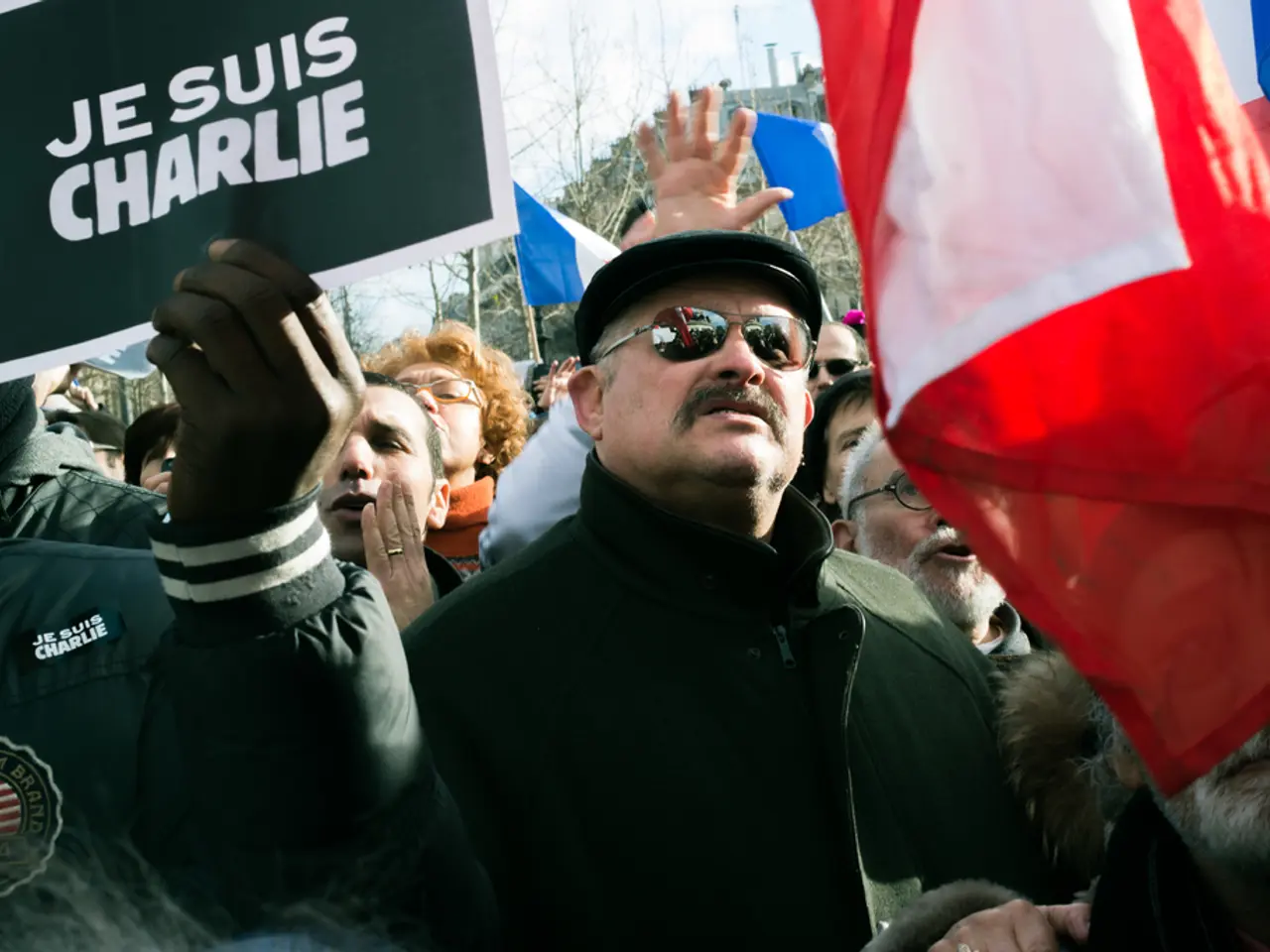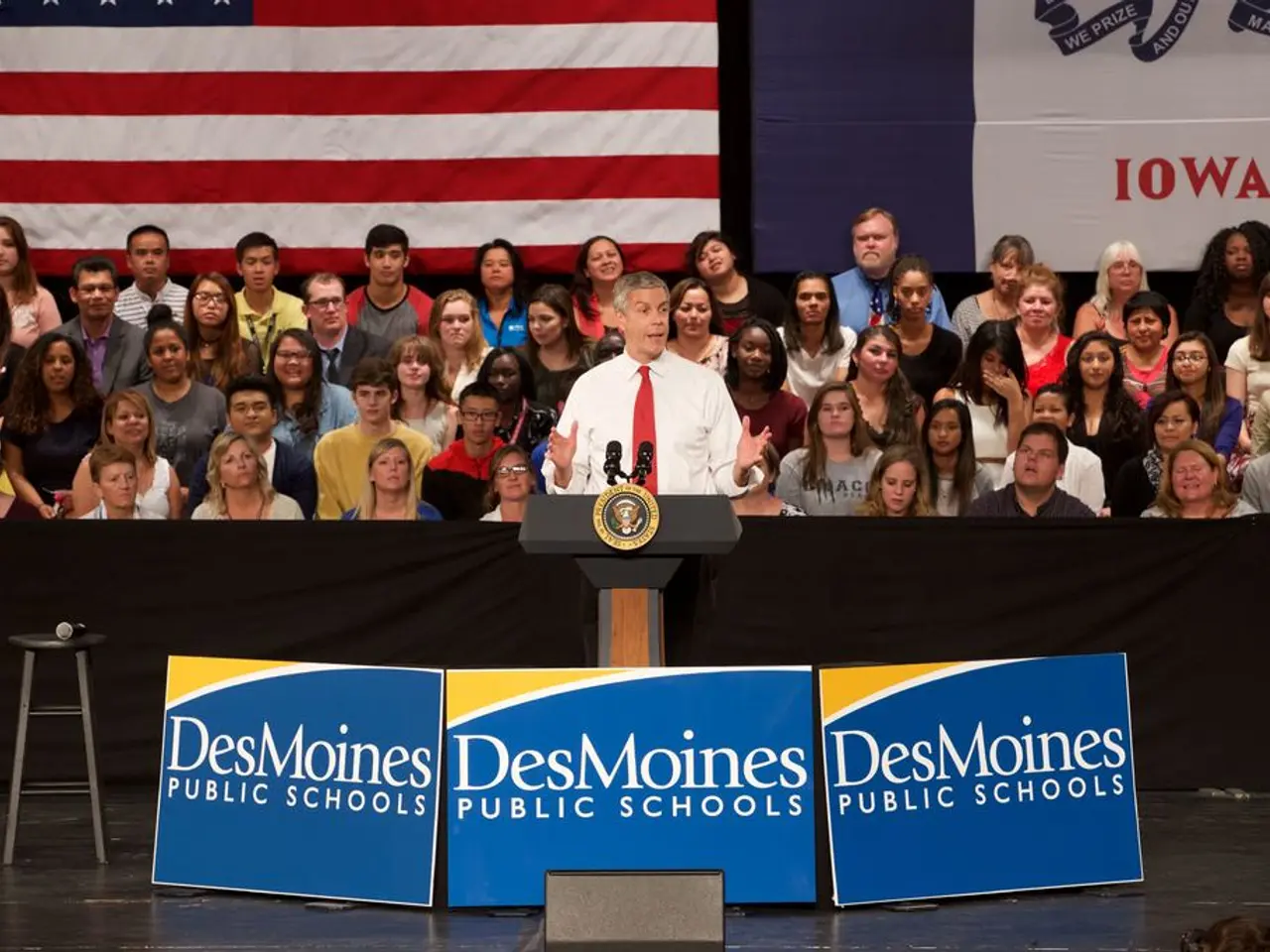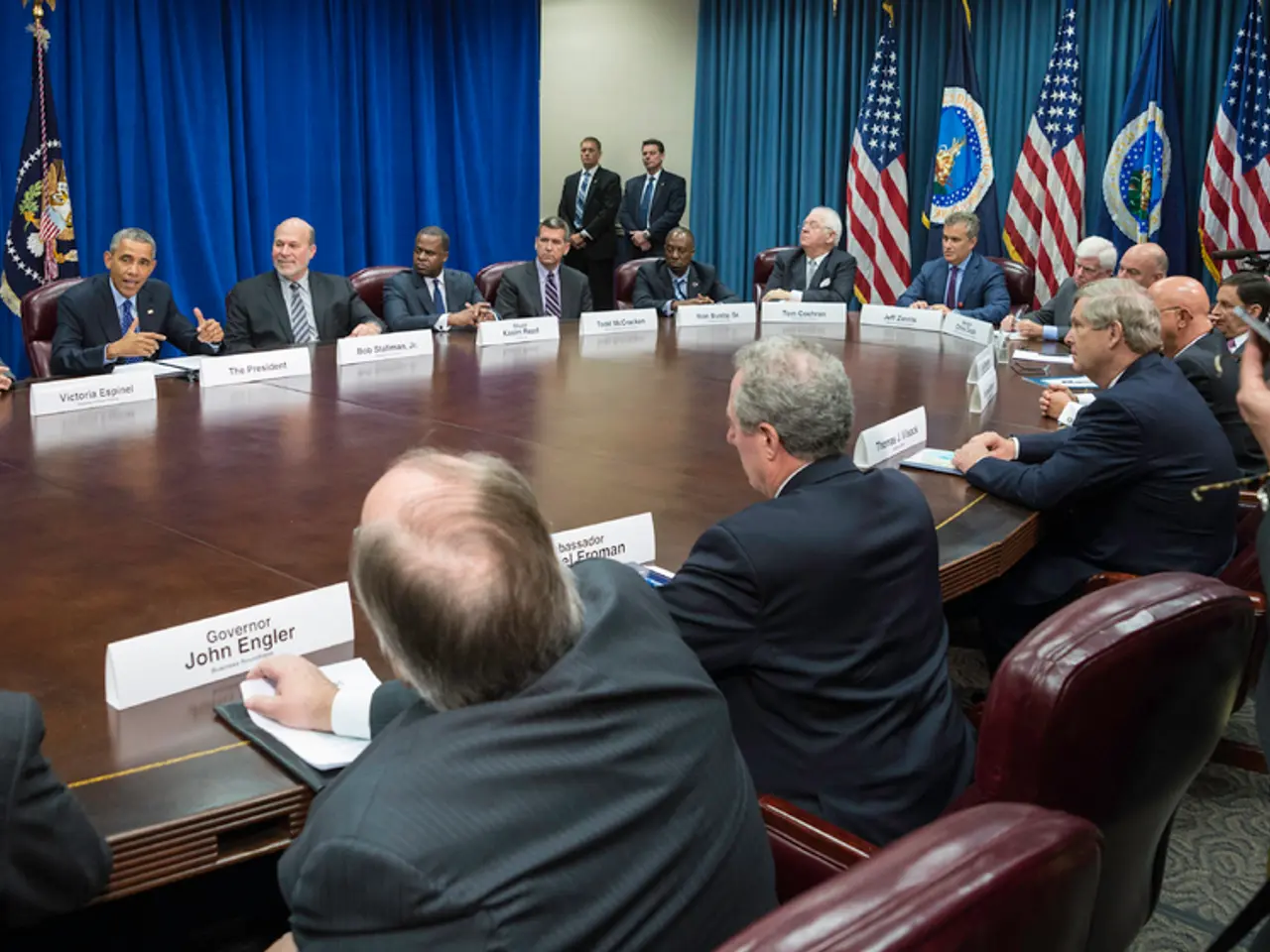Trump's Negotiation Advisor: "A conflict will ensue if Trump desires one" - Trump's Advisor Suggests: "If Trump Insists on Conflict, Conflict Seems Inevitable"
In the ongoing trade dispute between the European Union (EU) and the United States, the EU has adopted a strategic approach to present a unified front in negotiations. This tactic, aimed at ensuring all member states present a single, clear stance, is crucial in maximizing leverage and avoiding divisions that could be exploited by the US.
The EU's united front strategy involves presenting a coordinated and cohesive position among all its member states. This approach is particularly significant when dealing with a powerful partner like the US, which holds "escalation dominance" and applies pressure through tariffs and trade threats.
Negotiation expert Matthias Schranner, who has negotiated as a police officer in hostage situations and now advises companies, parties, and the UN, emphasizes the importance of this strategy. By speaking with one voice, the EU strengthens its bargaining power, demonstrates solidarity, and shows that it is a significant economic actor capable of coordinated retaliation or concessions.
As the deadline for reaching an agreement approaches on August 1, the potential consequences of a failure to do so are significant. If an agreement is not reached, 30 percent tariffs could be implemented, with massive economic consequences not only for the EU but also for countries like Mexico, where many parts for the automotive industry come from.
Schranner suggests that addressing potential conflicts earlier would be more beneficial than reacting negatively. He also criticizes side talks between the US and individual European leaders, stating that a united EU appearance would have been better.
In light of the US's conflict-oriented negotiation culture and Trump's penchant for creating disruptions, Schranner believes that negotiating profitably requires not avoiding conflicts and showing strength. He believes that two cultures of negotiation are meeting: one conflict-oriented in America and one less so in Europe.
Schranner's perspective aligns with the known expert perspectives on negotiation dynamics involving large blocs like the EU. He suggests that a united front among European actors, with Ursula von der Leyen as the chief negotiator, would be very important in such negotiations.
Interestingly, China has negotiated profitably with Trump by showing strength and fighting for its ideals and positions. Trump could extend the deadline again, but Schranner believes that if Trump wants a conflict, a conflict should occur, as problems can only be solved when they are there.
In conclusion, the EU's united front strategy is a proactive approach aimed at ensuring a cohesive and strong stance in negotiations. This strategy is crucial in maintaining balance, pooling political and economic strength, and demonstrating the EU's ability to counterbalance US trade pressure and protect European strategic sectors.
The EU's united front strategy extends to Community policy, policy-and-legislation, and employment policy, ensuring a unified position among all member states, particularly relevant when dealing with partners like the US. In the context of war-and-conflicts, general-news, and politics, Schranner, a negotiation expert, advocates for this strategy as it strengthens bargaining power, demonstrates solidarity, and showcases the EU as a significant economic actor.






